Tweets
Replying to @adafruit
OK! Indicator LED’s. They’re surface mount now, and centered around the USB plug. It’s a little thing but it drove me crazy. I had made them through-hole for the option of putting them on the front side, but having them close to the USB plug should make them visible enough. (3/?)
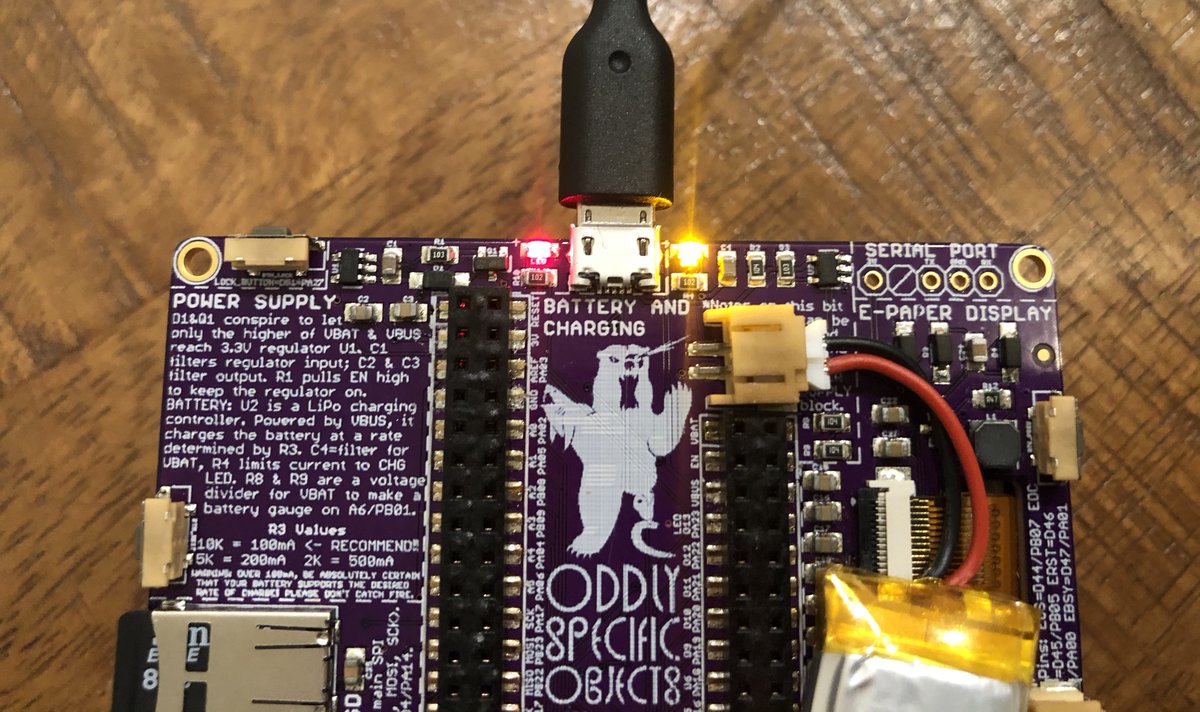
(original)
Replying to @adafruit
(Also, on advice of a colleague, I’ve set up a mailing list for updates about the Open Book and other Oddly Specific Objects; it’s where I’ll tell people if and when I’ve figured out how to make it real in larger quantities. You can sign up here) http://eepurl.com/gKOpQ9
(original)
Oh how I wanted to have this out of the oven in time for tonight’s @adafruit show and tell; alas, took a couple hours to get it up and running. I can share it now though: the Open Book Rev 2 is real! And looking pretty good. A quick tweetstorm to walk through the changes. (1/?)

(original)
Down from the mountains and my @oshpark order is here! Gonna be a busy week.
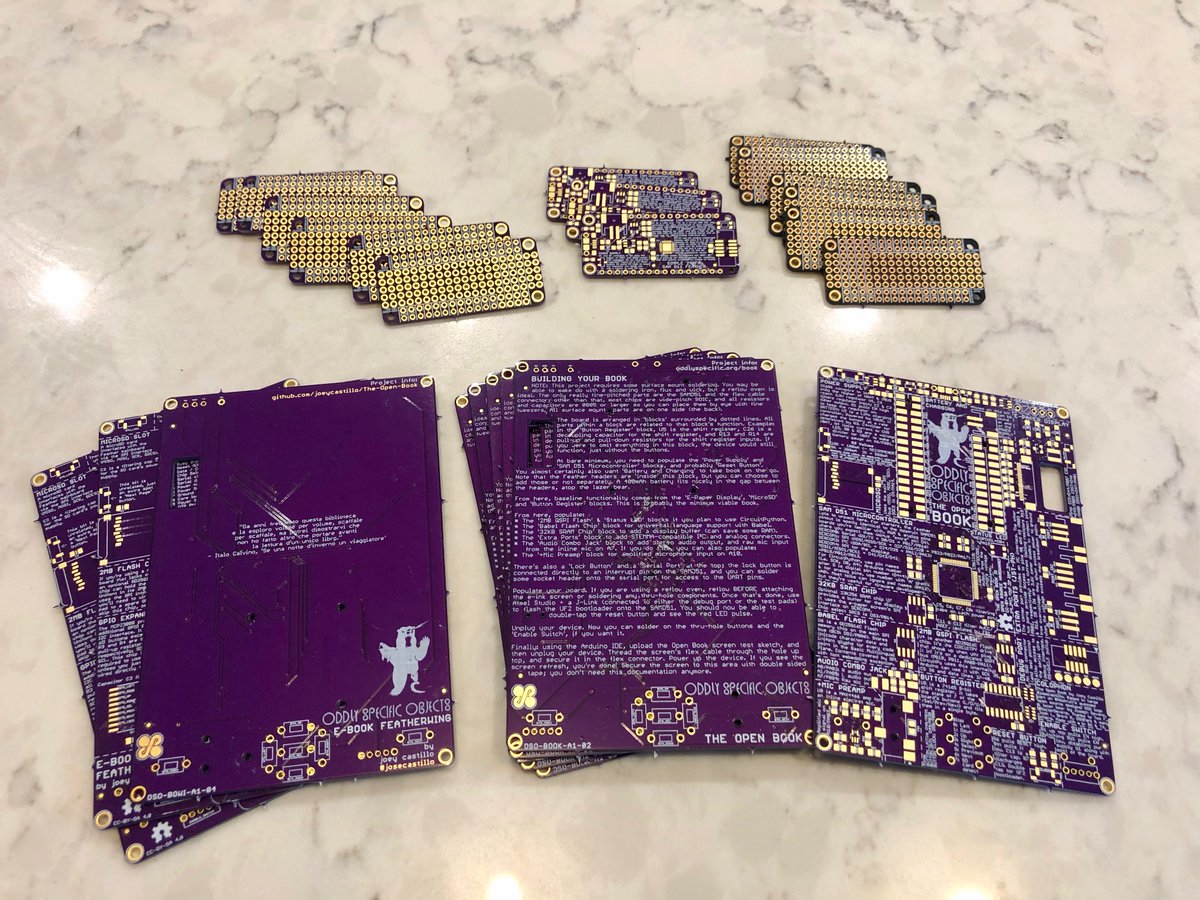
(original)
Replying to @thearkadia_
I love it in theory, but maybe once the project is more mature? Right now it’s all hardware stuff; I’ve lent prototypes to friends to read short stories, but it’ll take some software engineering to make this a book reading thing. From where we are this feels maybe six months away
(original)
Hiking log tagged along on a backcountry trek this week, delivering two days of excellent GPS and weather data without breaking a sweat. I’ve gotten a lot of mileage (literally) out of this ATmega32U4.
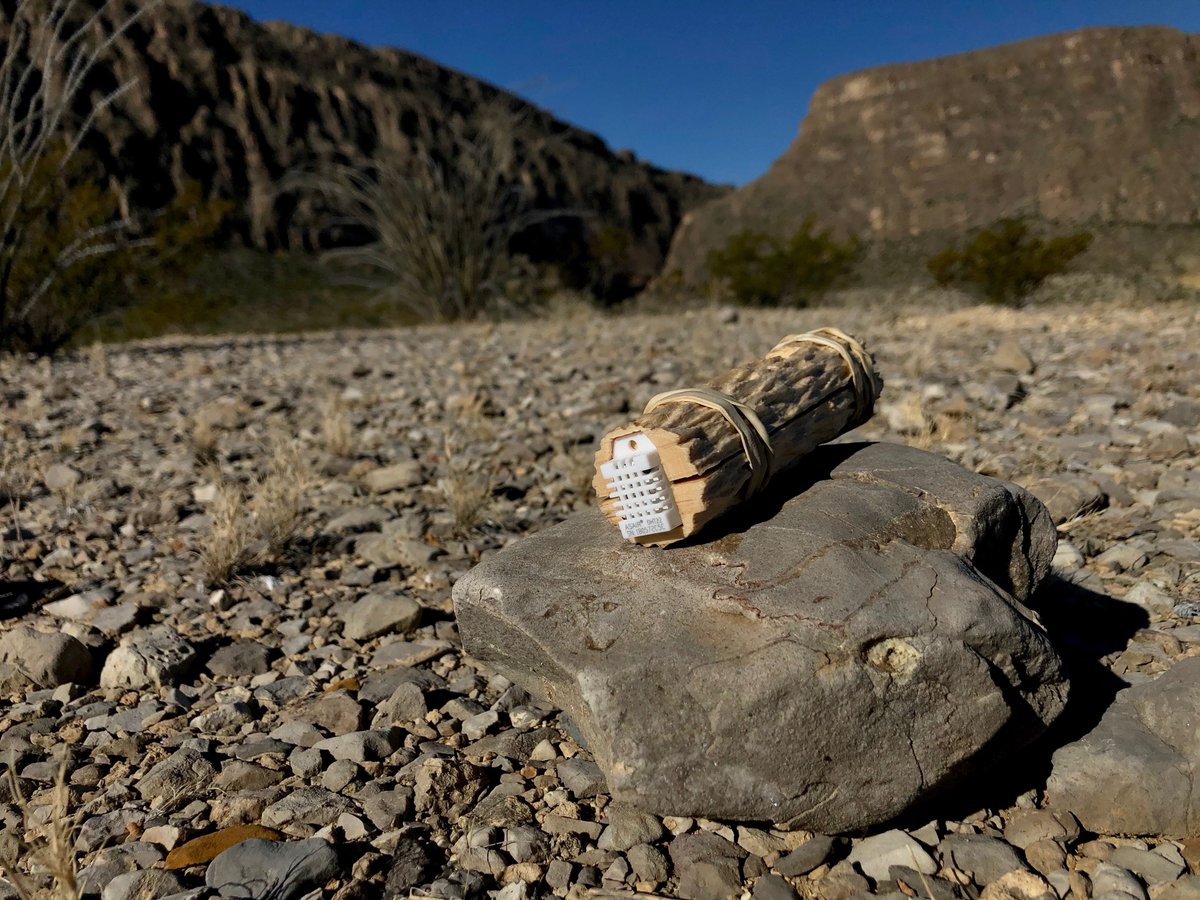
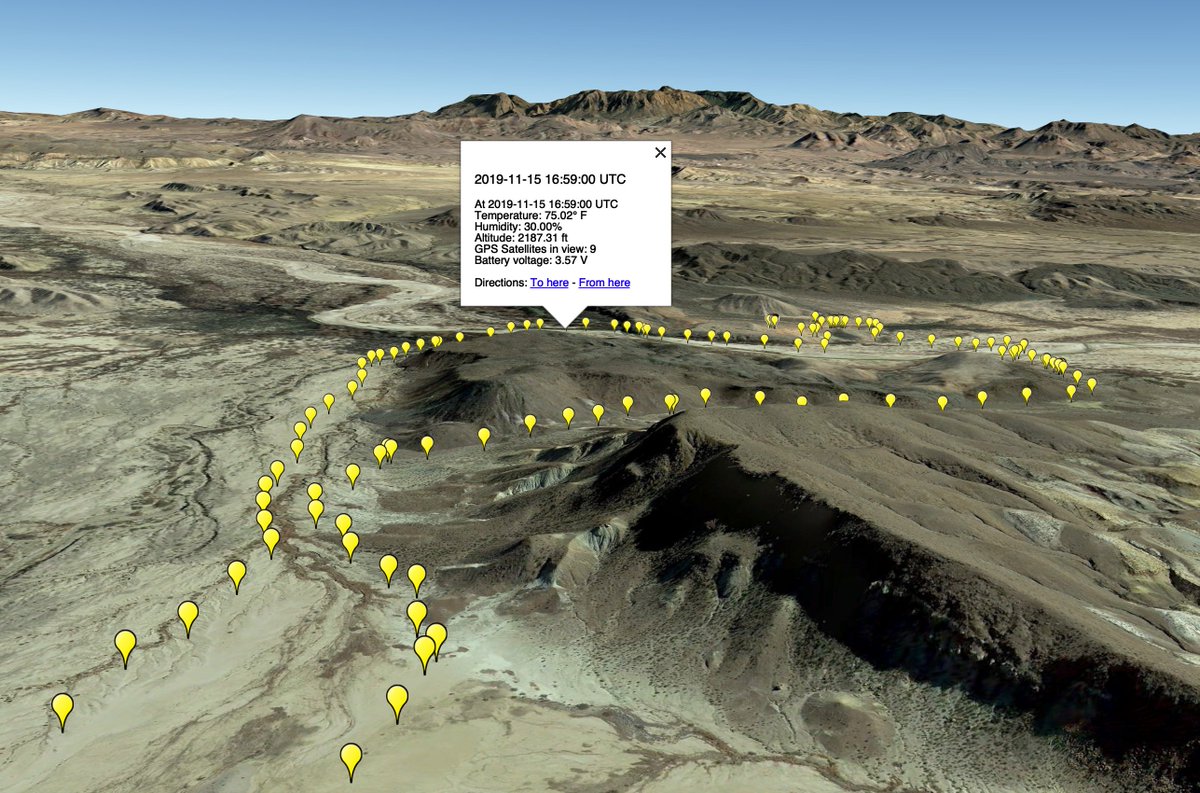
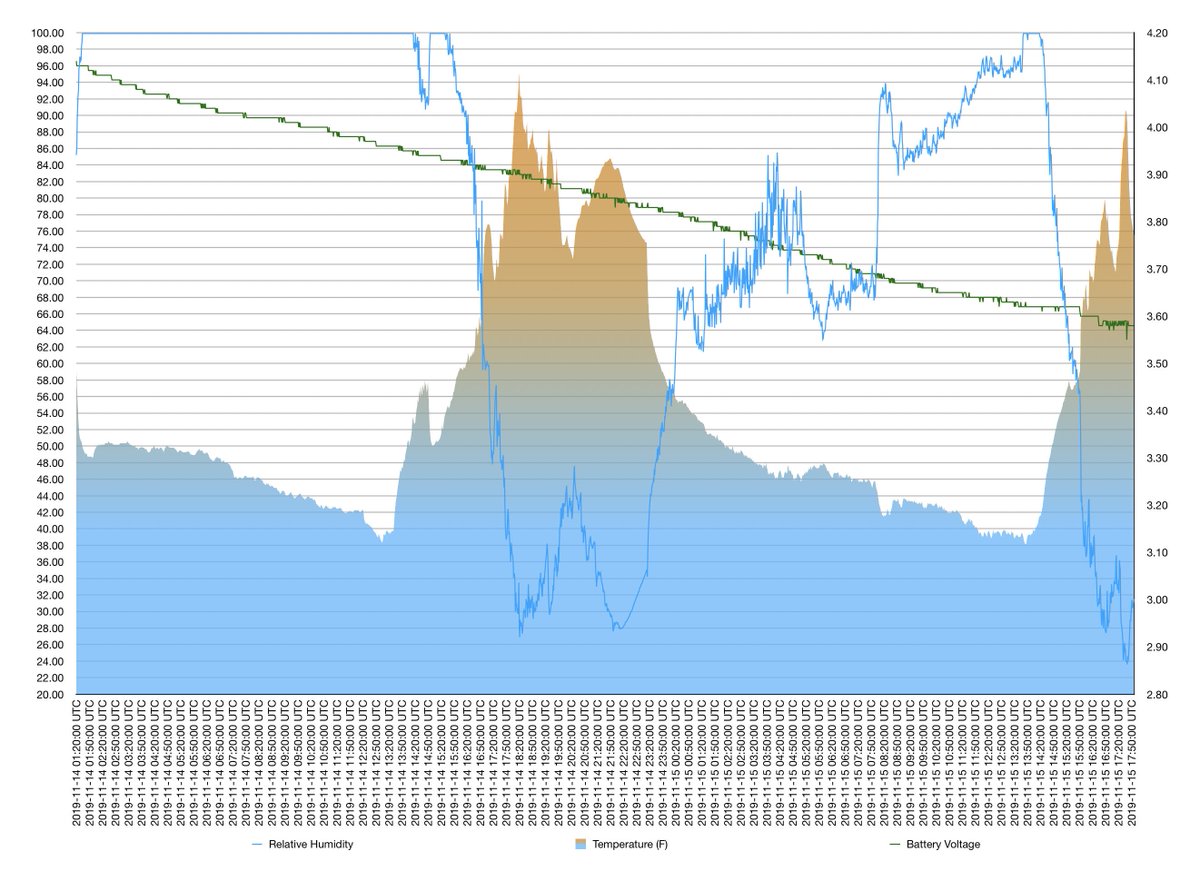
(original)
Replying to @tomfleet, @MicrochipTech, @oshpark and @kicad_pcb
This is so rad!! I need to learn me some KiCad.
(original)
Ok! Updated the Open Book README with BOMs for the latest rev of the book and the wing, plus new photos! New boards are at the fab; parts just shipped; stencils are ordered. Now I’m taking a few days off to hike in the desert while it all comes together. https://github.com/joeycastillo/The-Open-Book/blob/master/README.md

(original)
Replying to @tomfleet
*my attempt to squeeze as much as possible. Apparently I was going so minimal that I squeezed some words out of that sentence as well
(original)
Replying to @tomfleet, @no1089, @brett_io, @particle and @tindie
Hah yeah I bet the D11 board could happen for less, but it also does a lot less than an nrf52840. Might be right-sized for simple projects where even a $15 board feels like overkill; to borrow a quote, a bit of “less is only more where more is no good”.
(original)
Replying to @tomfleet
Definitely! Actually in that same repo is the 24-pin SAMD11 board I’m hacking on; if anything makes it to Tindie it’d be that one. Less hand-solderable, but my attempt as much as possible out of a $1 microcontroller :)
(original)
Replying to @josecastillo
If you want to build this, it’s all here on GitHub. I mixed up some of the pin muxing constraints, so the SPI pins are going to come out a bit shuffled; one of the many lessons learned baking this apple pie from scratch. (5/5) https://github.com/joeycastillo/Feather-Projects/tree/master/Experiments
(original)
Replying to @josecastillo
One last pic, the simple feather atop the eBook wing. The feather’s not even remotely powerful enough to drive the wing — just reading the buttons takes up most of the available program space — but still I think it’s rad to see the way the pieces fit together. (4/5)
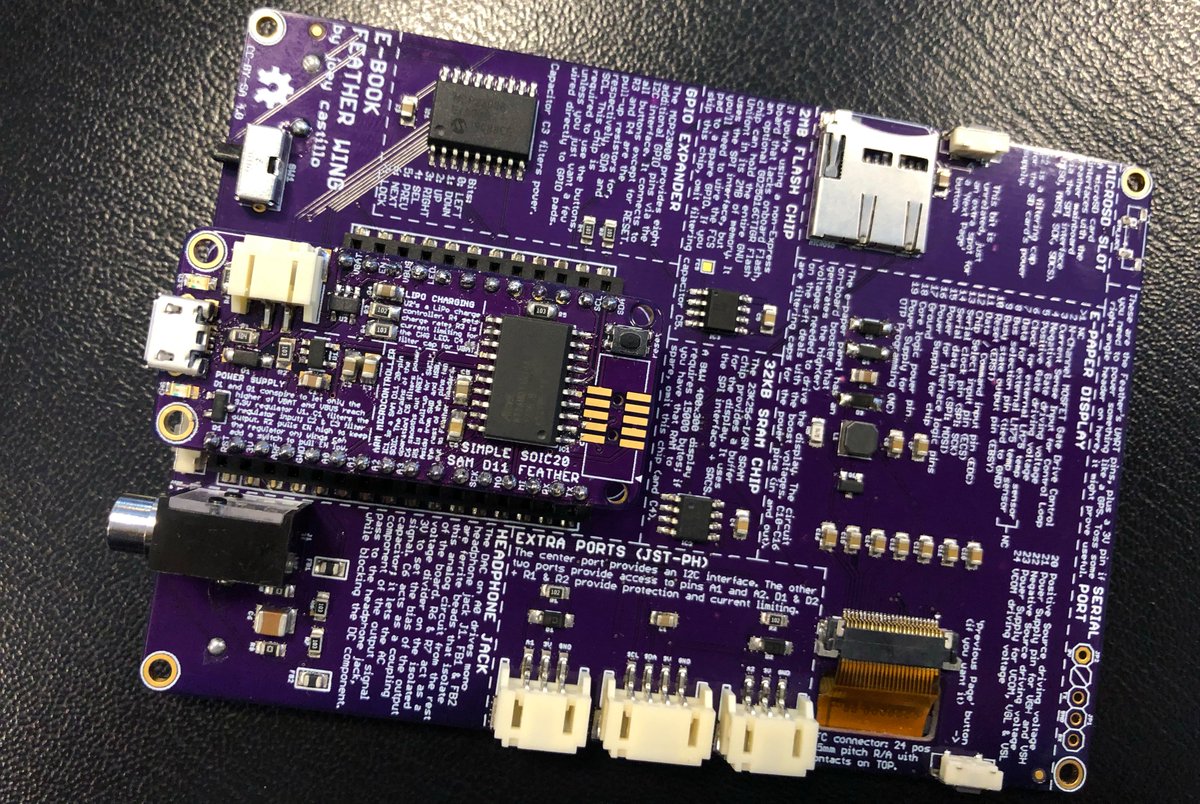
(original)
Replying to @josecastillo
And even with these constraints, it’s surprisingly capable: three SERCOMs means it can support I2C, SPI and UART; there’s native USB and plenty of analog inputs; and it turns out you can charge a LiPo battery with parts that fit in a half a square centimeter, which is rad. (3/5)
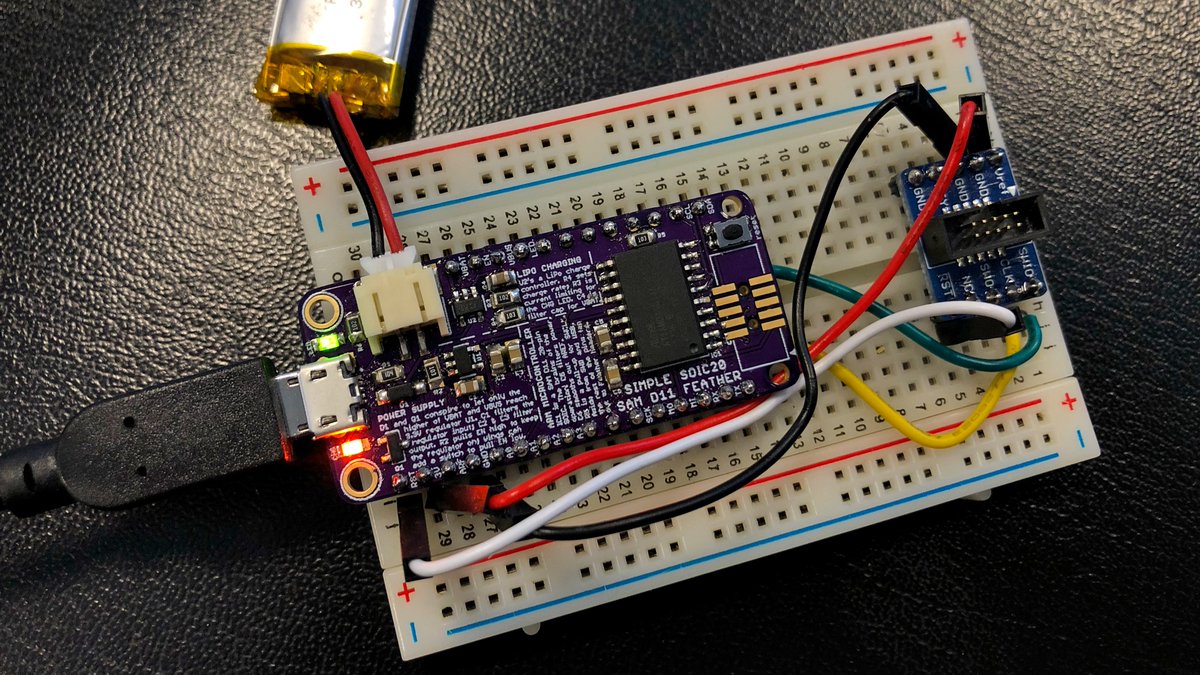
(original)
Replying to @josecastillo
A closer look at the layout. It’s very minimal; no spare GPIO on the top, and there’s only room for 12kb of user code. Still it really helped me to learn new skills and test my ideas; you might recognize the beginnings of the Open Book’s “self documenting” silkscreen here. (2/5)

(original)
Here’s a fun throwback: before I built the Open Book, I felt I needed to build a simpler board first. The leap from making peripherals to designing my own Feather seemed too big to do in one step. Hence this lil guy from a few months back: a hand-solderable #SAMD11 Feather. (1/5)
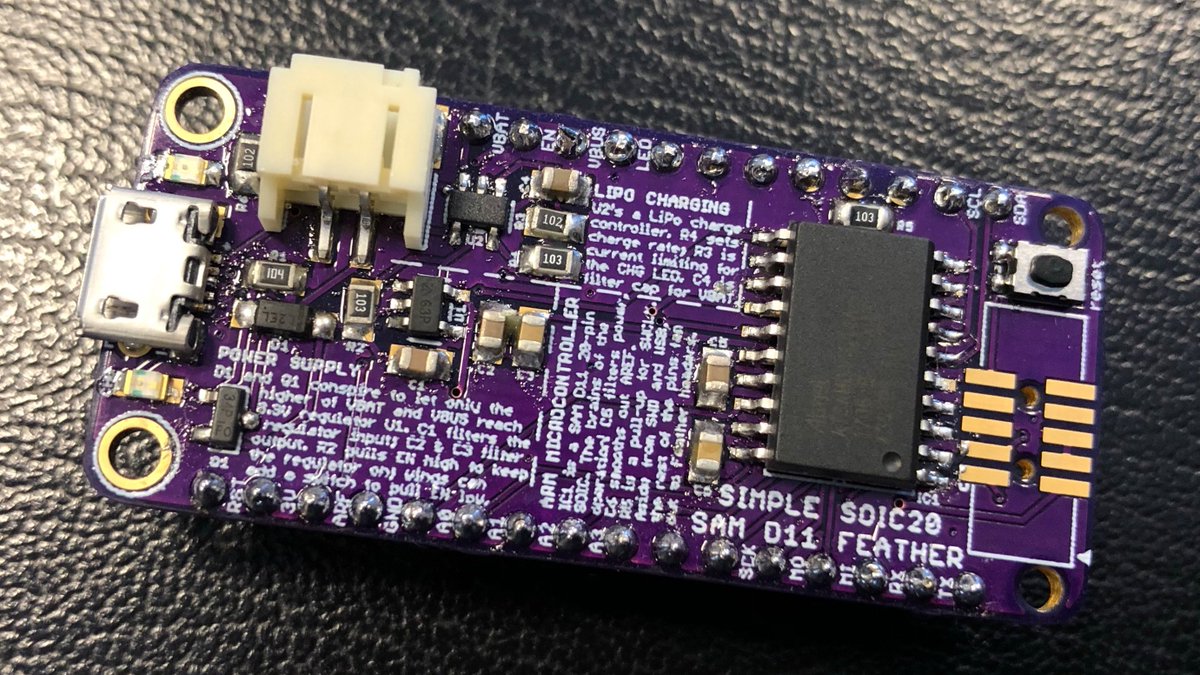
(original)
Replying to @bigjoshlevine
The buttons… my initial design used an I2C port expander with internal pull-ups for the buttons; ended up switching to a cheaper shift register and forgot that I’d need to provide the pull-up or pull-down myself. Easy fix tho.
(original)
Replying to @josecastillo
Resistor array.
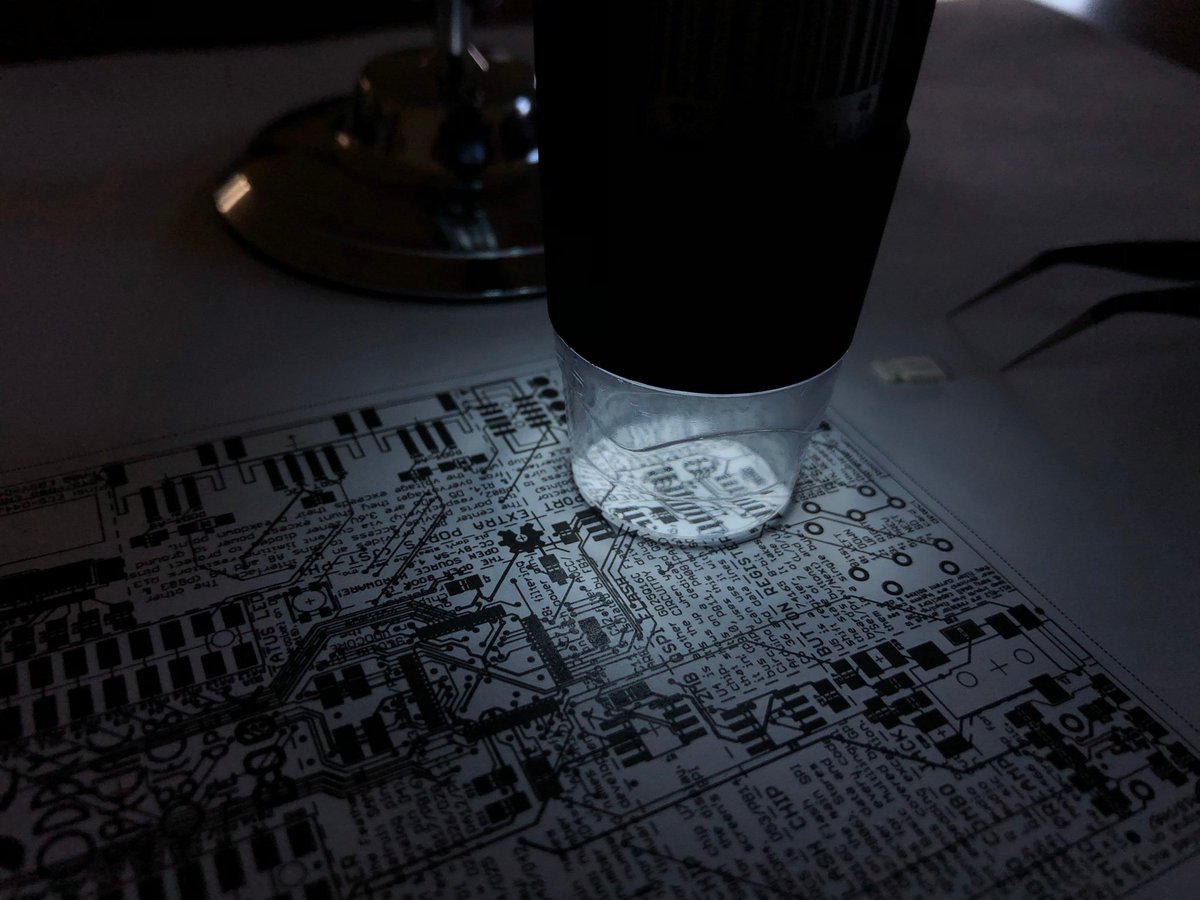
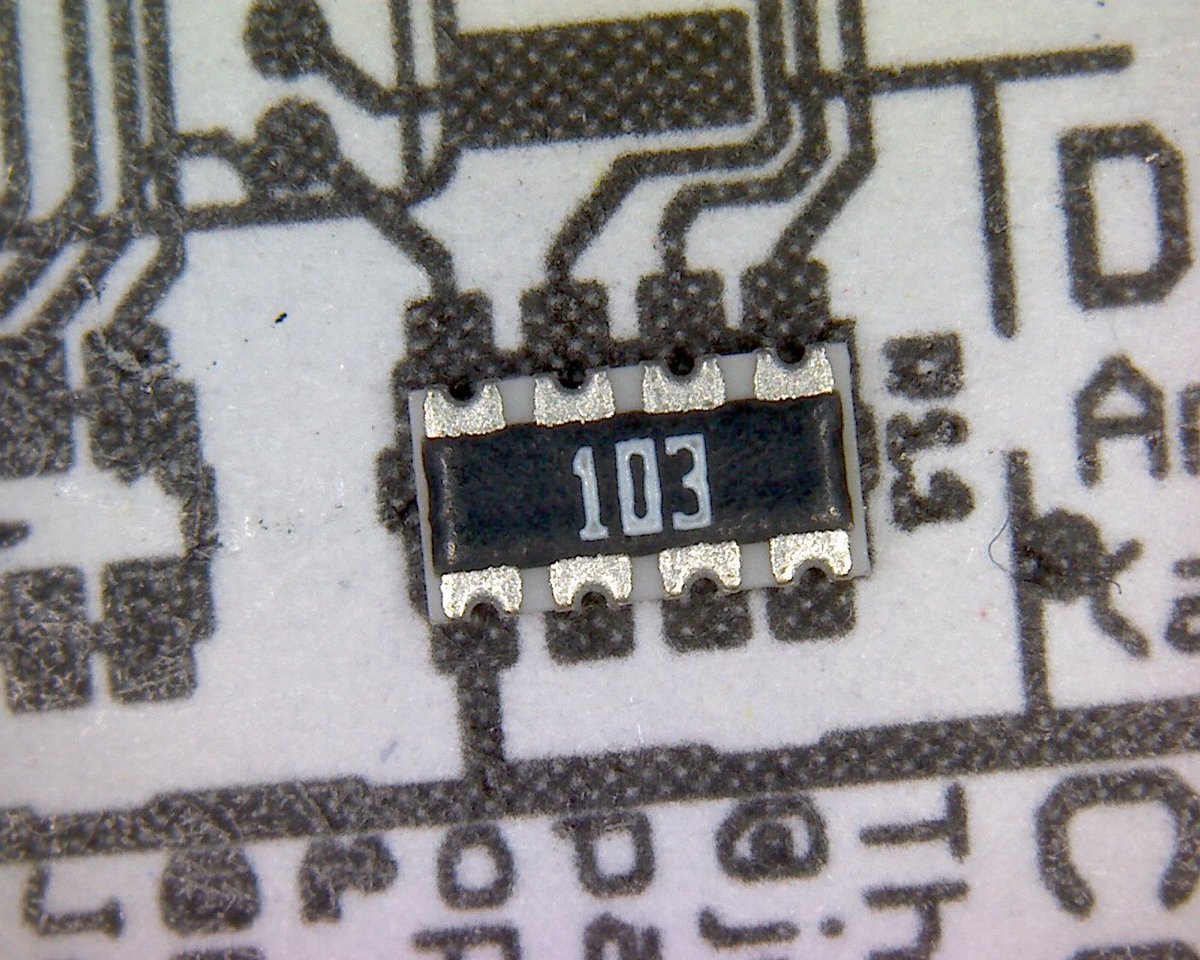
(original)
Replying to @thaTechMaestro
Honestly it’s just me adding text directly to the board in Eagle as I work, nothing special
(original)
Replying to @VonGomben
Working on this bit! Talking to colleagues who know a bit about getting boards manufactured, trying to figure out the way to make it make sense
(original)
Replying to @cogliano and @tomfleet
Thanks for the suggestion! While I don’t want to make my name super prominent (it’s about the work, not the person) a URL is a really good idea for folks who might want to learn more. Adding it!
(original)
Replying to @thearkadia_
The audio jack is optional, and I imagine most people will leave that bit out. But I like having the option of a mic for accessibility, the idea that someone with say limited mobility could use it for voice commands. And who knows, folks might find other unexpected uses for it!
(original)
Barring any major mistakes, this is almost certainly the final layout of The Open Book rev 2. In addition to fixing my design errors (and adding a mic amplifier), I realized I could use the area under the screen on the front as space for a README :) https://github.com/joeycastillo/The-Open-Book/tree/master/Open%20Book%20Feather

(original)
Replying to @cccfr, @oshpark and @adafruit
I need to hack some more on larger displays. They do exist, but the ones I’ve been able to get my hands on have been really expensive and have really slow refresh rates, too slow for turning pages. I’m sure better e-paper tech is out there though! /cc @1RishavBhardwaj
(original)
Replying to @titimoby, @seeedstudio, @adafruit, @hackaday and @digikey
This is awesome, thanks for sharing! I definitely plan to submit the Open Book for consideration :)
(original)
Replying to @josecastillo
Video and source code, which is v hacky (and does text drawing with a new library I’m still working on) but the server side script is cool, neatly filters half the trains in the city down to three departures per station I care about. https://gist.github.com/joeycastillo/12273bd0befc297f20f61146fa9806f5
(original)
Turns out the Open Book both drives and tucks perfectly underneath a 7.5 inch eInk display, so I threw an AirLift FeatherWing on top of one of the prototypes and turned it into a departure board for the subways near my apartment.
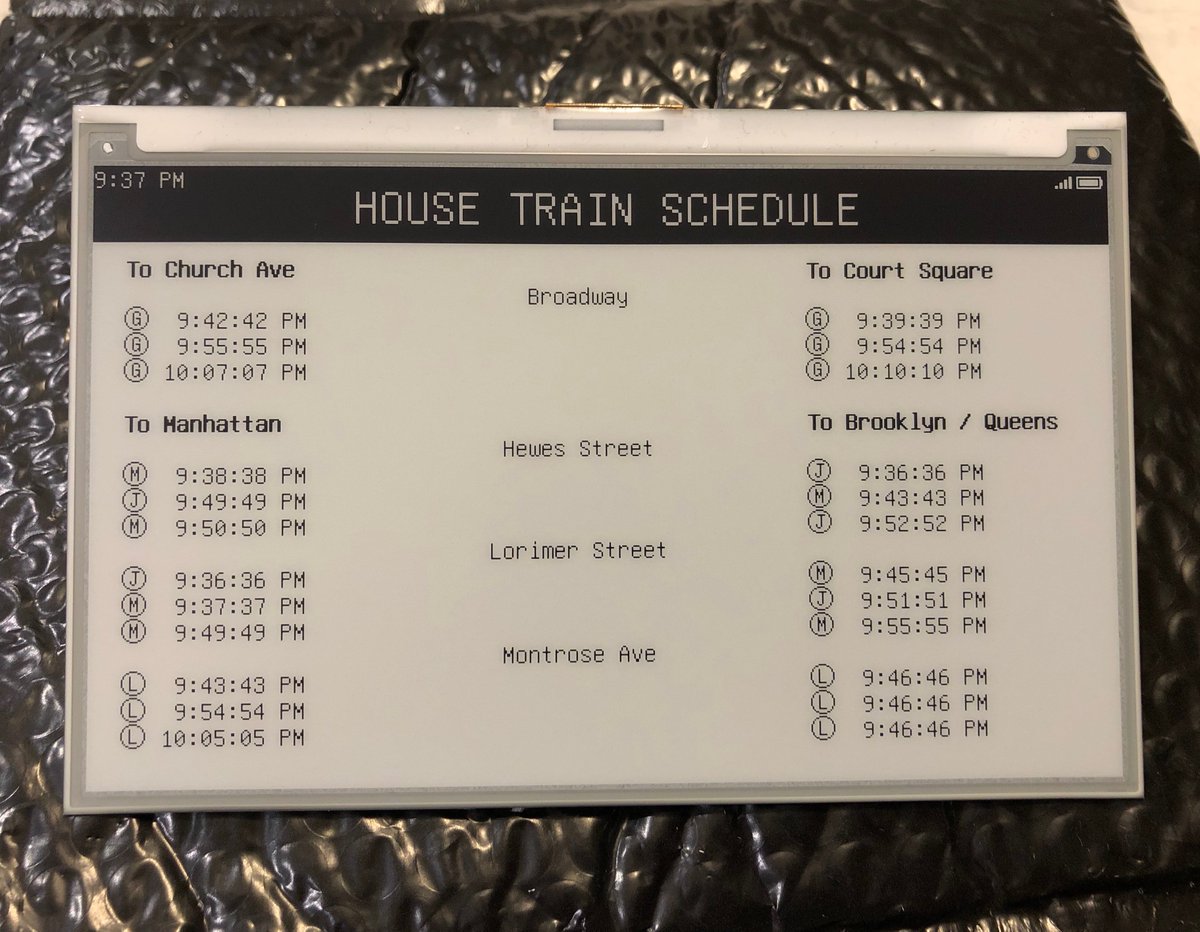

(original)
Replying to @fsasm0, @oshpark and @adafruit
Definitely! Also the beauty of having accessory ports on the side: you could plug in a big button or a foot pedal or even a gesture sensor to turn pages, which I totally did for a demo early on :)
(original)
Replying to @buzzkobb
It is mostly surface mount, but I think it’s something one could put together with a stencil and a DIY reflow oven. The only really tricky bits are the 0.5mm pitch SAMD51 and the flex connector; for everything else I used 0805 and SOIC footprints so parts would be easier to place
(original)
Replying to @buzzkobb
hah no that’s me testing a fix for my design error in rev 1, the lack of pullup resistors. Already have rev 2 in progress which refactors the buttons and adds two resistor arrays (just to the right of the shift register) so this hack won’t be necessary :) https://github.com/joeycastillo/The-Open-Book/tree/master/Open%20Book%20Feather
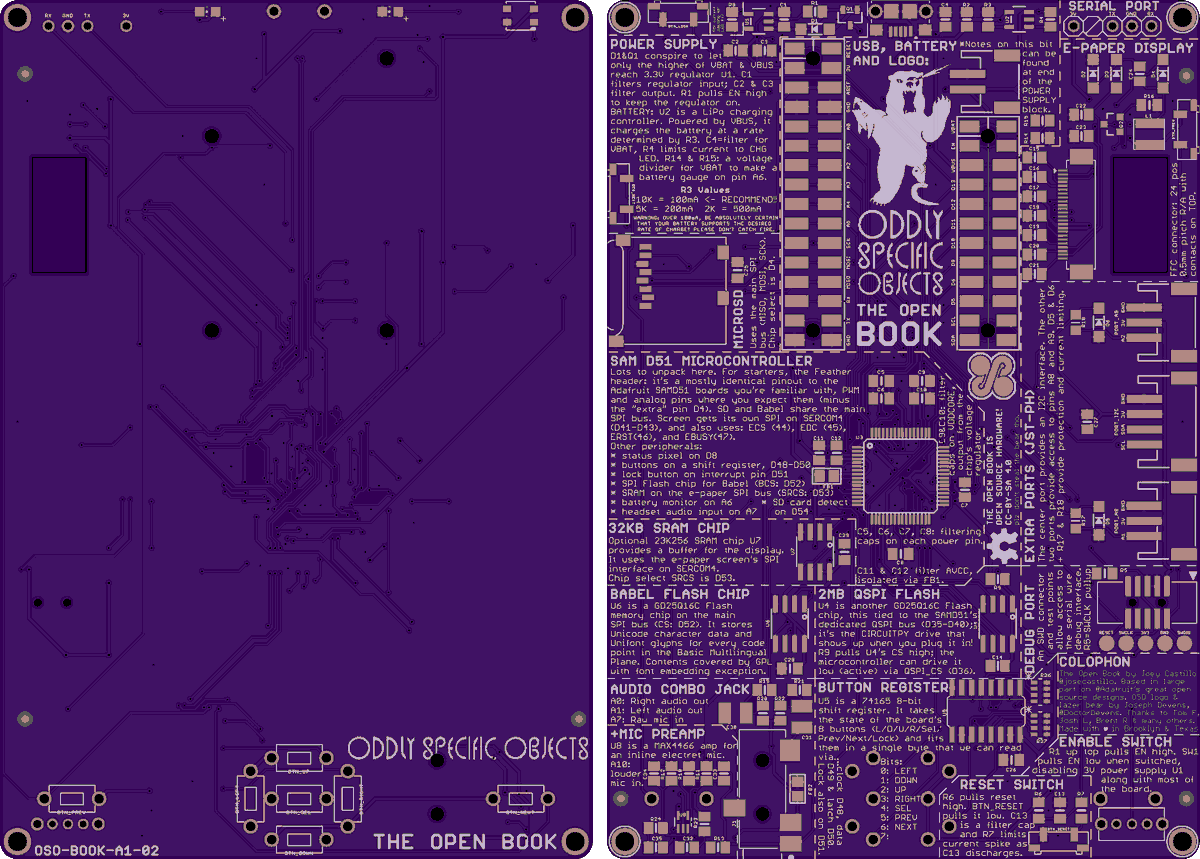
(original)
Replying to @hammercog, @bjt2n3904, @ebrombaugh, @oshpark and @adafruit
I guess my issue is Adafruit said to CC-BY-SA, and I did the BY, and I did the SA, and now I want to get back to doing the work instead of hiring a lawyer to find letters to put on the work that both respect their terms and make purists happy. I am telling you: steal this book :)
(original)
Replying to @hammercog, @bjt2n3904, @ebrombaugh, @oshpark and @adafruit
curious to hear more then. I borrowed some elements from Adafruit designs that were CC-BY-SA and kept the same terms. More broadly tho I sense that like much in life, a lot depends on the user: I’m a guy hacking in spare time telling you to have at. can’t it just be that simple?
(original)
“resistor array”
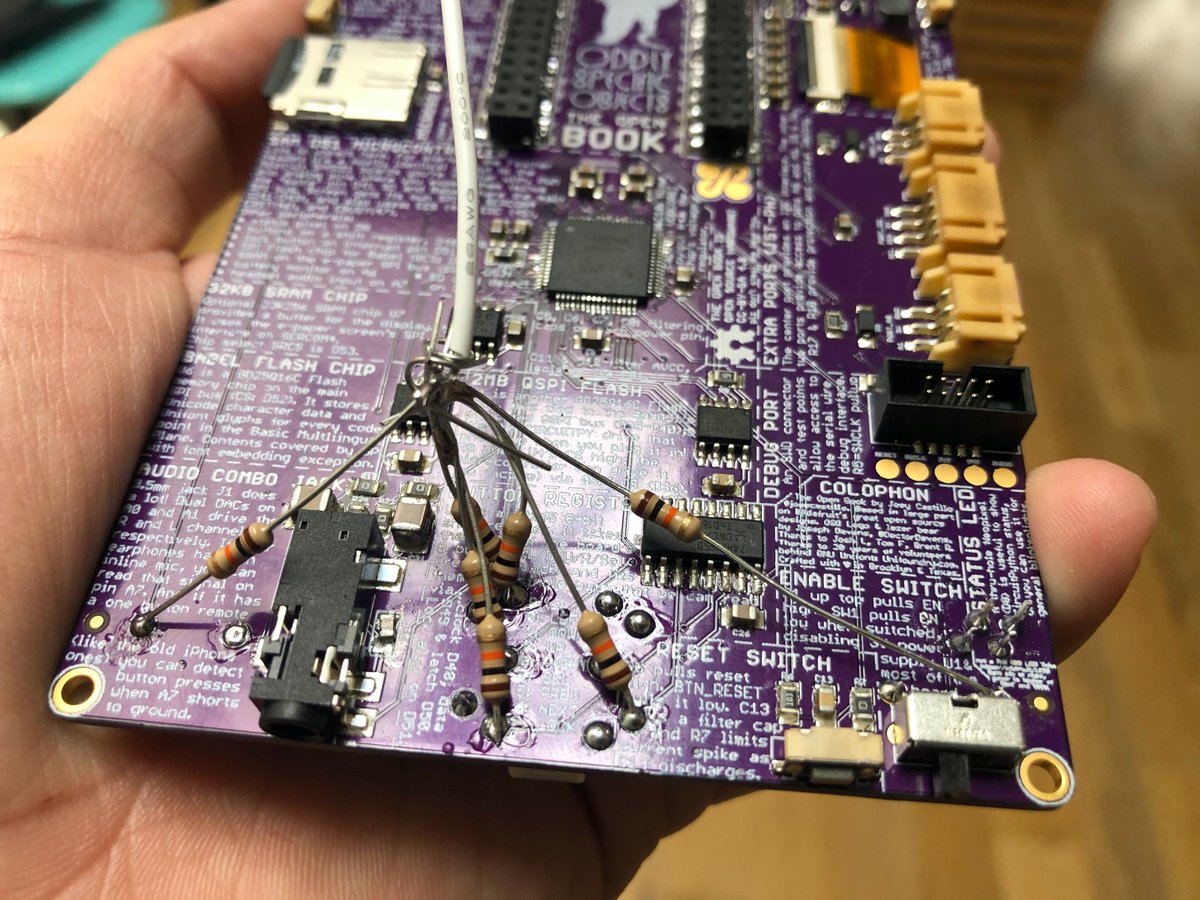
(original)
Replying to @hammercog, @bjt2n3904, @ebrombaugh, @oshpark and @adafruit
It’s CC-BY-SA 4.0; tweak it, build it, sell it, just share your work with the rest of the class 🙂
(original)
Replying to @emmflo
To save on pins they’re not directly connected. For an earlier version I’d been using an I²C port expander with internal pull-ups; switched to a shift register for this rev and missed the fact that I need external pull-ups now.
(original)
Things that worked on Open Book Rev 1: audio output (sounds great!), screen, Flash and RAM chips, SD card. Things that didn’t: mic input (need a preamp), buttons (forgot pullup resistors, rookie mistake), Neopixel (works, but layout is just boneheaded). Definitely need a Rev 2 😬
(original)
Replying to @bjt2n3904 and @ebrombaugh
ONE BOOK UNITING ALL AS ONE!
(original)
Replying to @oshpark and @adafruit
Also! Shout out to my talented friend @DoctorDevens on the board art; he drew both the Oddly Specific Objects typeface and the artwork in the center, a bionic lazer-shark-bear that I think really ties the board together.
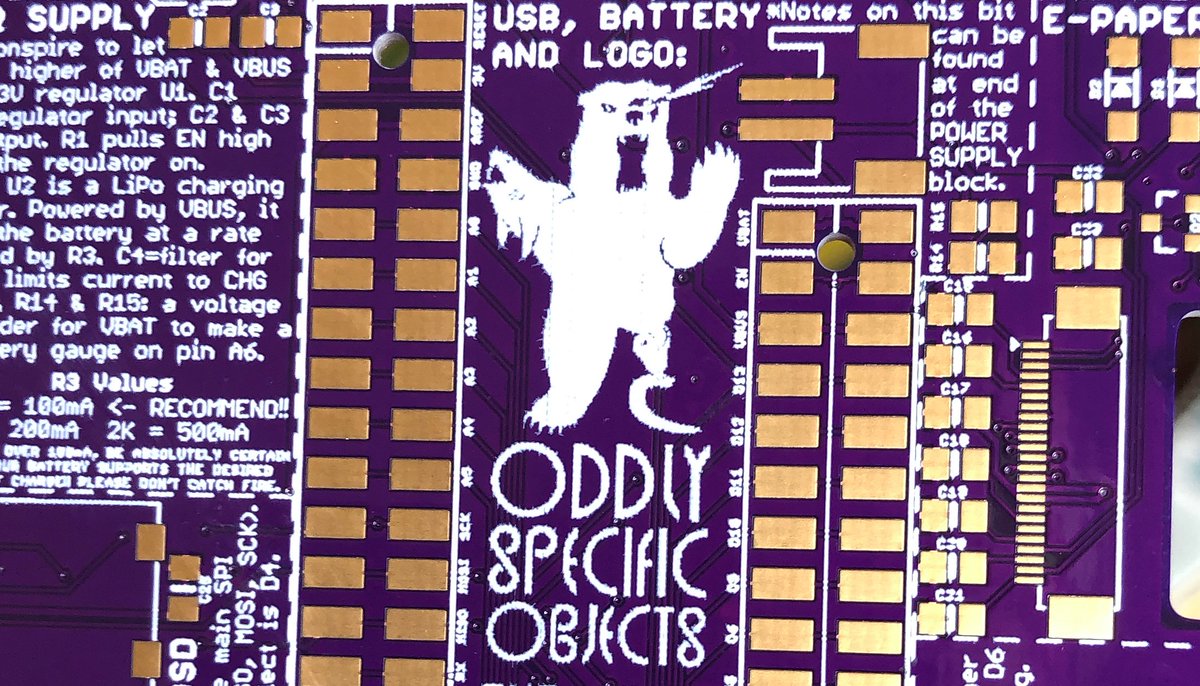
(original)
Meet the very first Open Book, in lovely @oshpark purple! A Feather-form SAMD51 board (inspired greatly by the @Adafruit PyBadge) with eInk screen, 8 buttons, headphone jack, STEMMA ports and more. Some things to fix in Rev 2 but it’s getting very close :) https://github.com/joeycastillo/The-Open-Book/tree/master/Open%20Book%20Feather
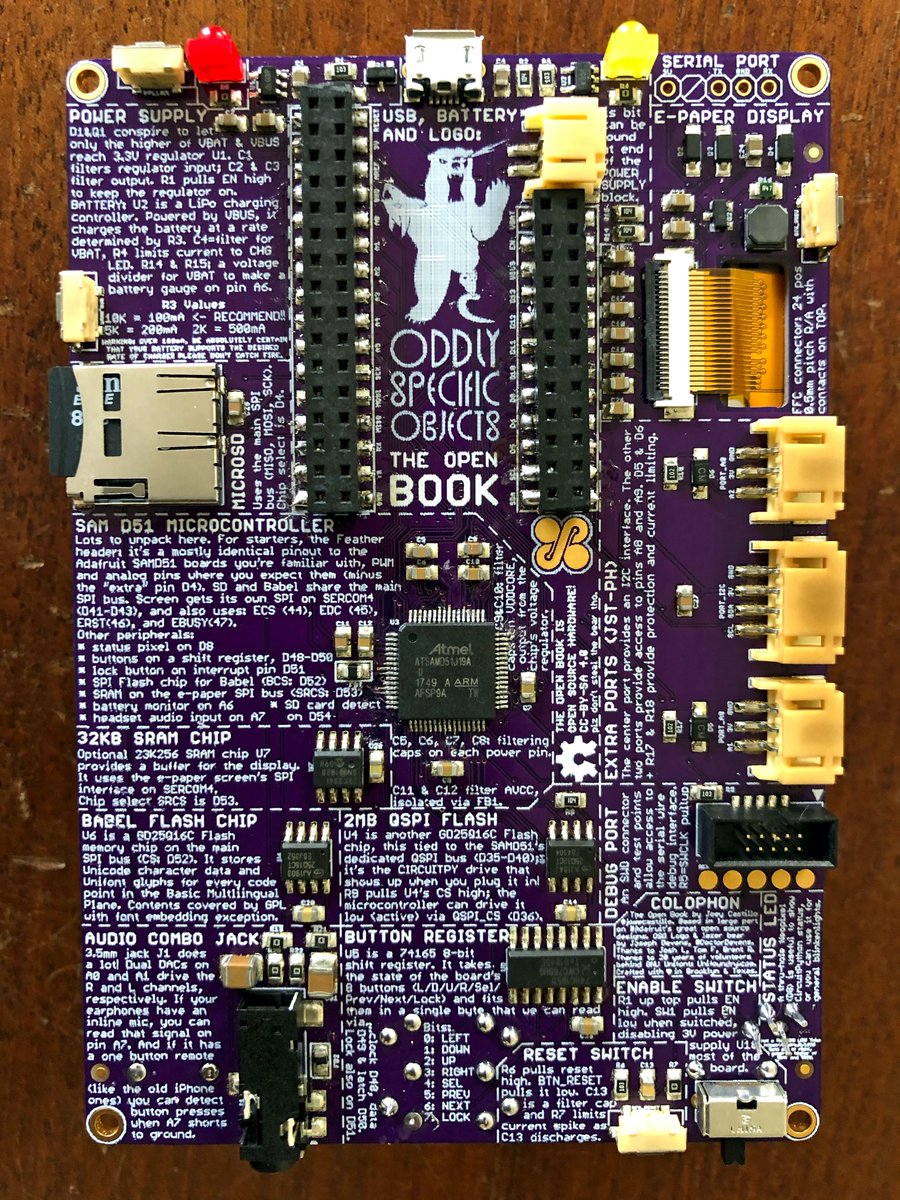
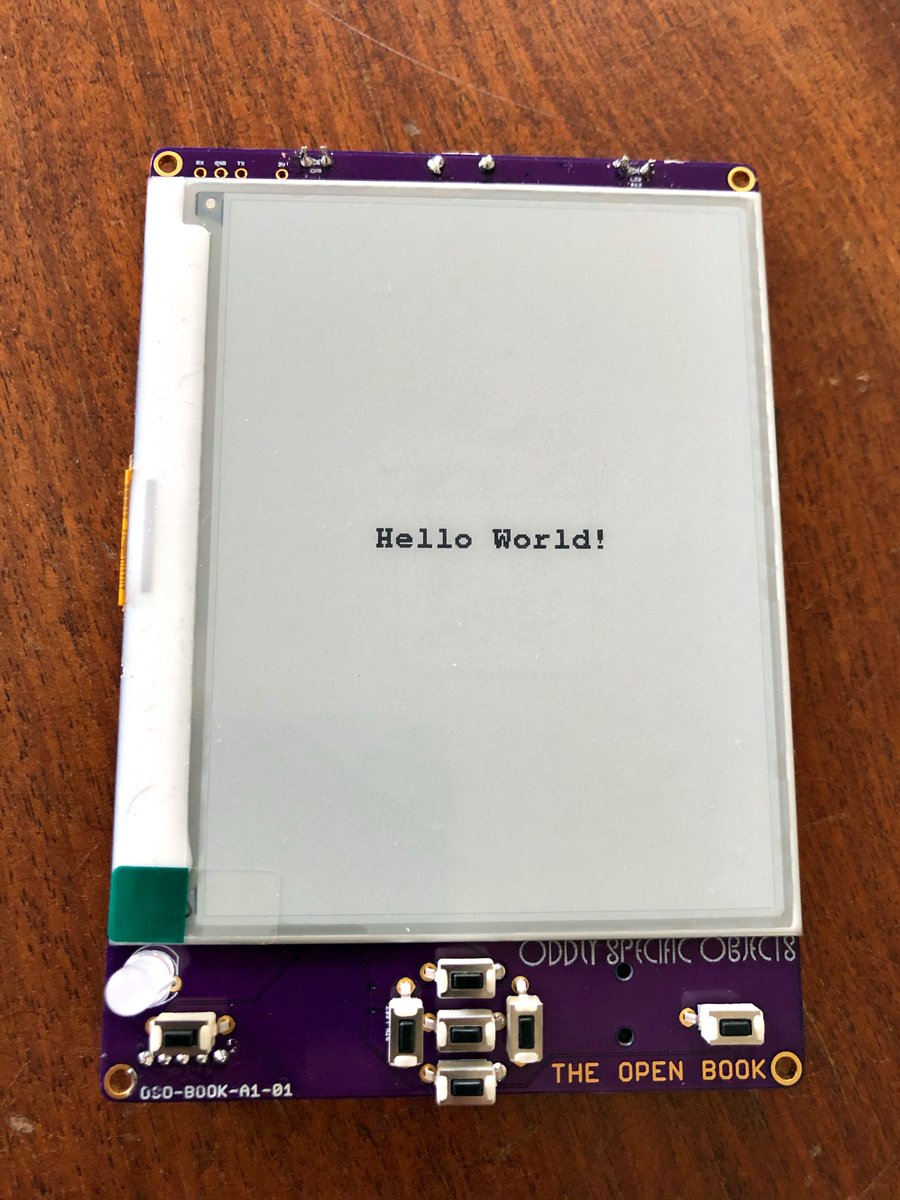
(original)
Replying to @kkress
Keep at it! I’ve been blocking advertisers’ accounts since April and at last my feed seems to be mostly ad-free.
(original)
Replying to @guidoism
I should add that the demos in videos so far are all just basic Arduino sketches to get a sense for how it’ll eventually feel when done… the whole thing is really a side project in its infancy, but I’m hoping to have something real to share by year’s end. https://gist.github.com/joeycastillo/d0604333631bdbee9daf69f74529311d#file-brokeback-ino
(original)
Replying to @guidoism
Codewise most of my effort of late has been universal language support. Goal is to support books in every language on earth; had to make some hardware & software to make it happen. Working on porting to CircuitPython now; book reading follows text drawing. https://github.com/joeycastillo/babel
(original)
Replying to @guidoism
Hoping to have more to share in November; almost ready to order a test run of the v2 PCB’s with microcontroller on board. I wouldn’t tell anyone to order it until I’ve validated it, plus I’m still making tweaks (feedback welcome)! https://github.com/joeycastillo/The-Open-Book/tree/master/Open%20Book%20Feather
(original)
Replying to @josecastillo
More broadly: building the Hiking Log and using it on the trail all year was kind of a revelation. It showed me that there’s no magic to these objects that orbit our lives. They’re all things that were made by people, which means that people like us can make them too. (7/7)
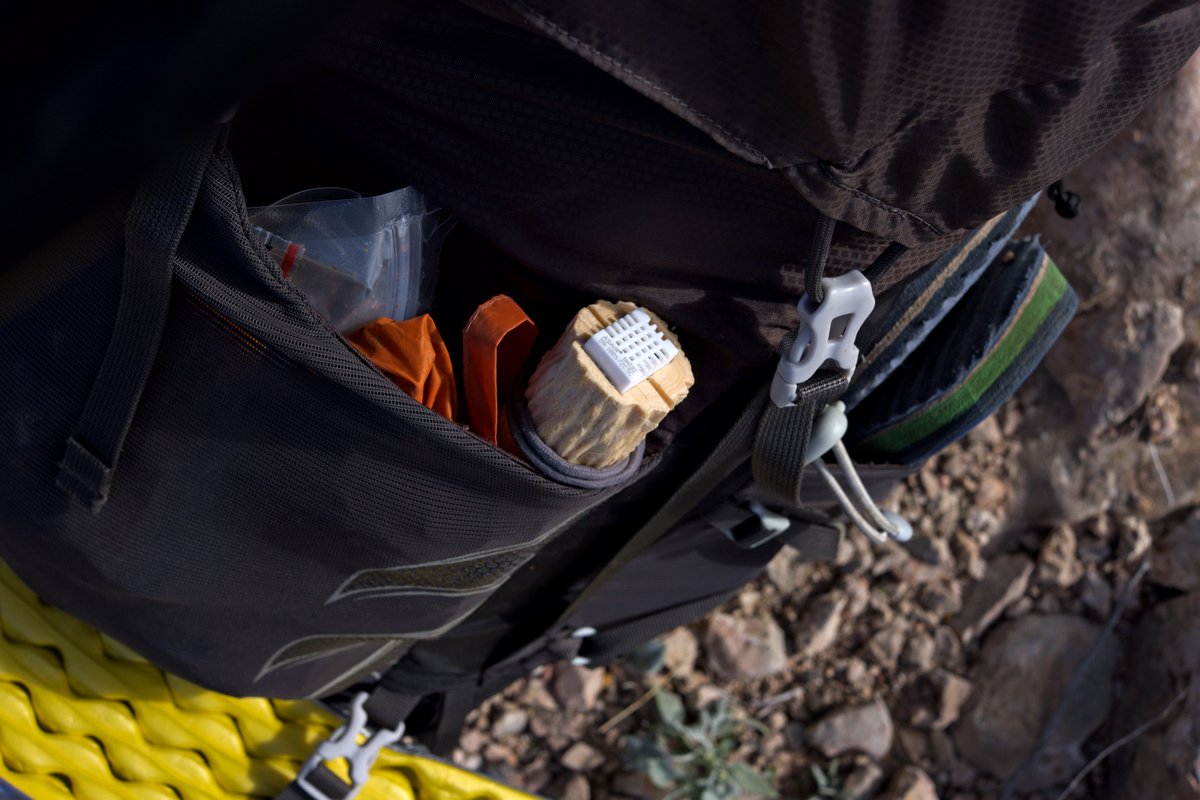
(original)
Replying to @josecastillo
Then you can run this code on it. It’s not great; my first foray back into Arduinoland a year ago, but it works, and sometimes code that works is the best kind. (6/7) https://gist.github.com/joeycastillo/3e39f10166f27569a9e281666c9de794
(original)
Replying to @josecastillo
Print A with B. Solder C into the top side of D. Attach long wires to E’s power, gnd and data pins. Thread through the gap at the bottom of A. Solder headers to F. Trim E’s wires and solder to 3v, gnd and a data pin on F. Stack with D. Plug in G. Secure with rubber bands. (5/7)
(original)
Replying to @josecastillo
If you want to make this, I bet I can fit a parts list and a guide into two tweets: (4/7)
A: https://www.tinkercad.com/things/fs752lxl3uC-hiking-log-enclosure
B: https://www.monoprice.com/product?p_id=12507
C: https://www.adafruit.com/product/2940
D: https://www.adafruit.com/product/2796
E: https://www.adafruit.com/product/385
F: https://www.adafruit.com/product/3133
G: https://www.adafruit.com/product/1781(original)
Replying to @josecastillo
I’ve tried to mess with it so much all this year; considered adding more sensors, then a screen, even Bluetooth and an app. But there’s something to be said for simplicity: I toss this small, oddly specific object in my backpack, and it logs my hike. (3/7)
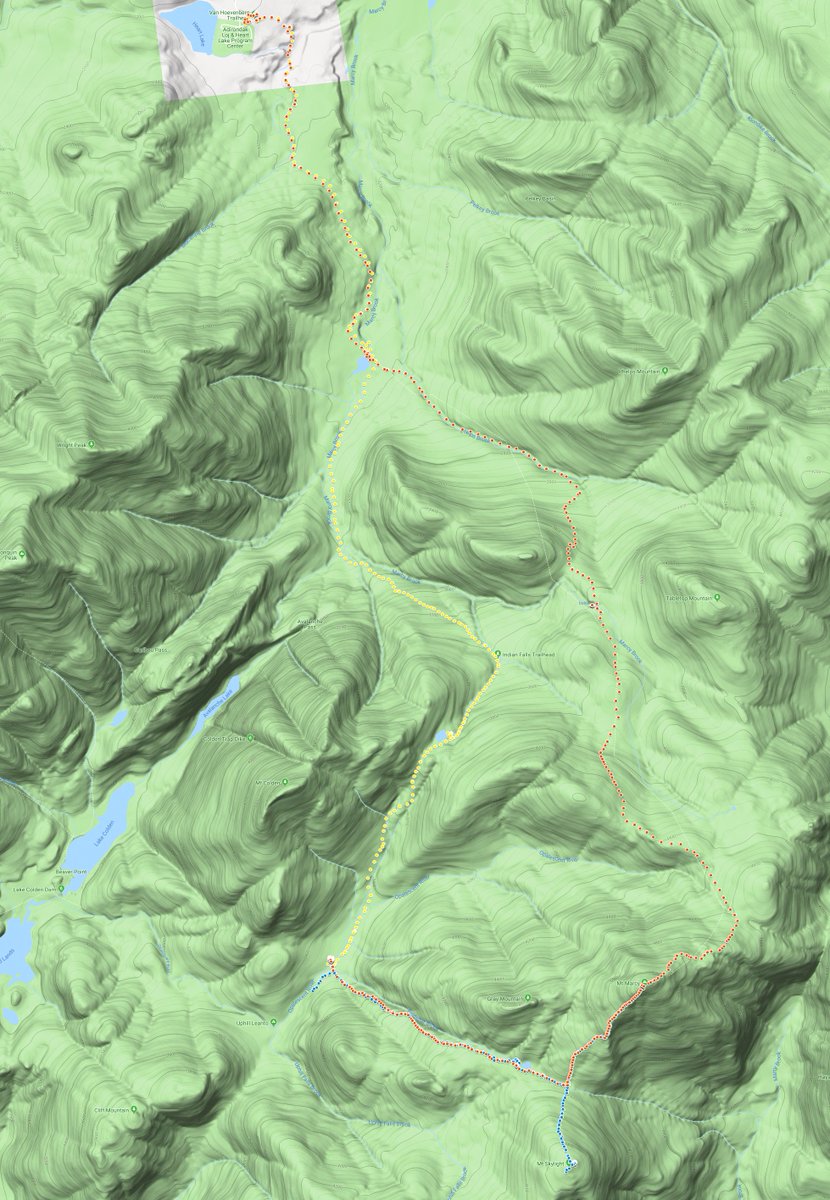
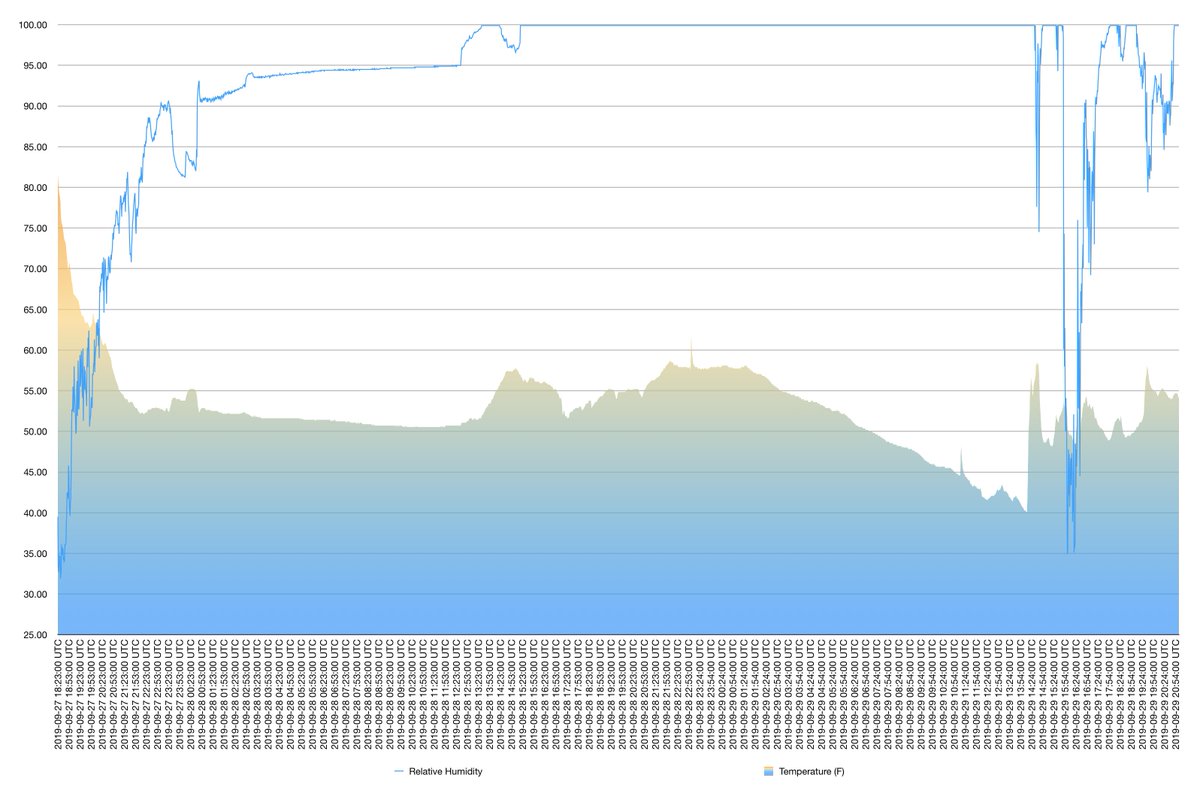
(original)
Replying to @josecastillo
It’s a great starter project with basic soldering: a DHT22 wired to an @adafruit GPS wing and a 32u4 Feather. It logs GPS, temperature and humidity to an SD card. A chunky 2200 mAh battery runs it for three days on a full charge. The case, of course, is shaped like a log. (2/7)
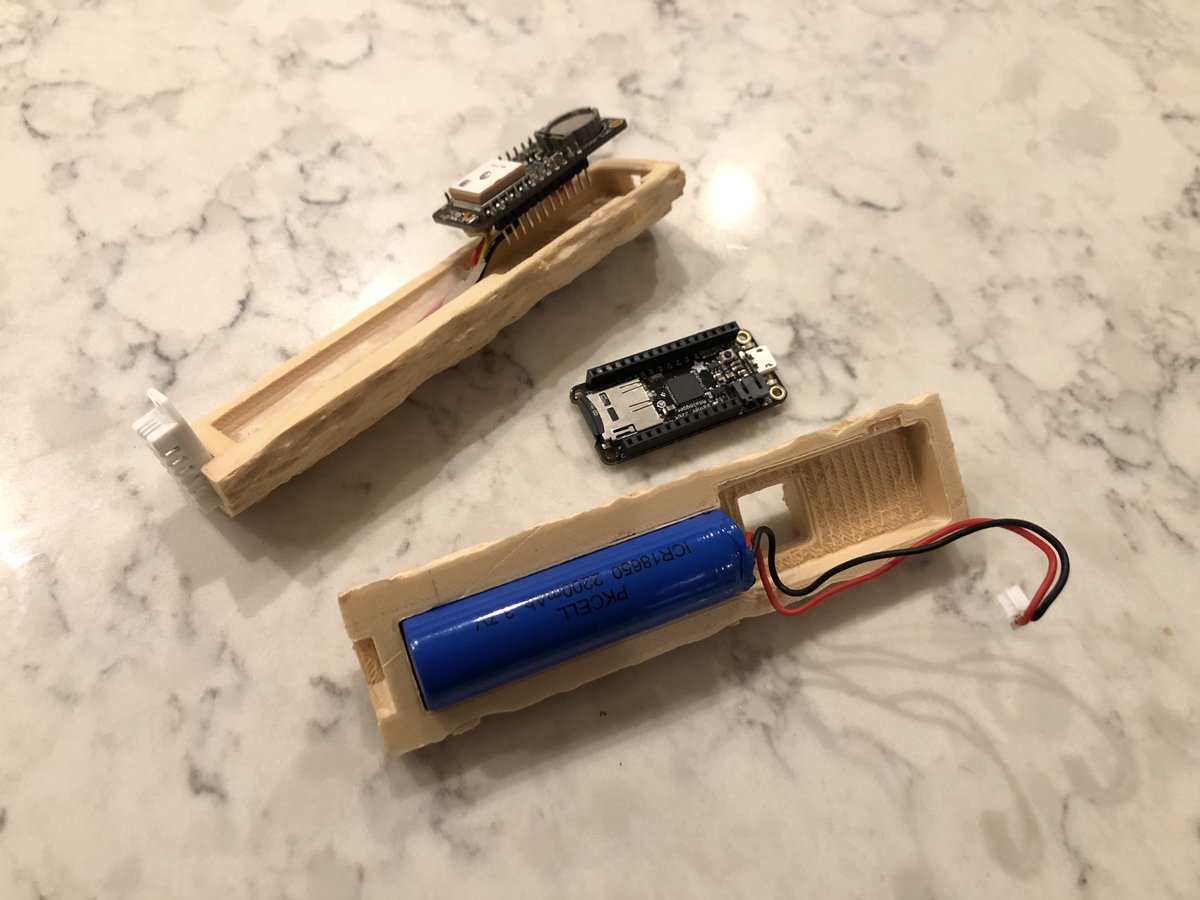
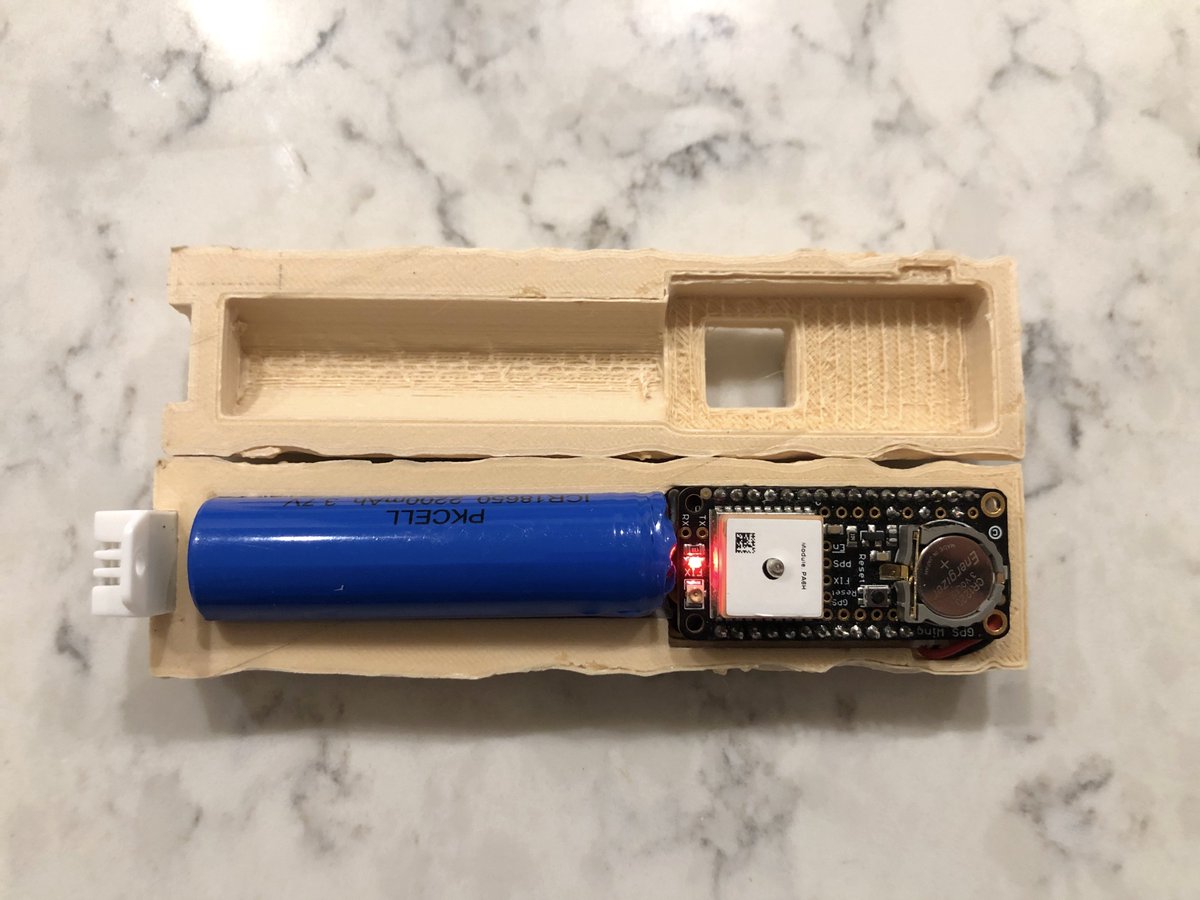
(original)
The original and still the best! I guess it was about a year ago that the Hiking Log project got me interested in making again. Since then I’ve reimagined it and tweaked it countless times, yet when I went camping in the Adirondacks this weekend, I reached for the classic. (1/7)
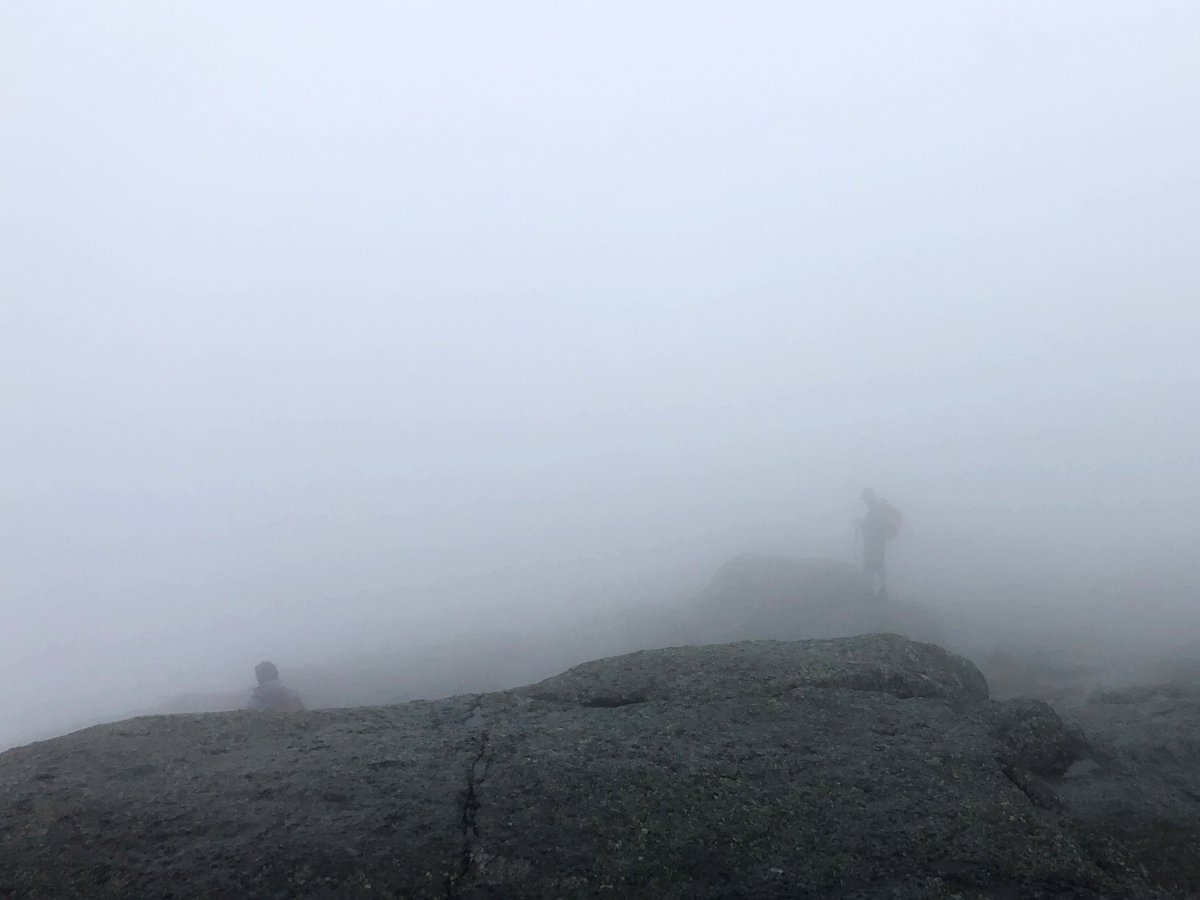
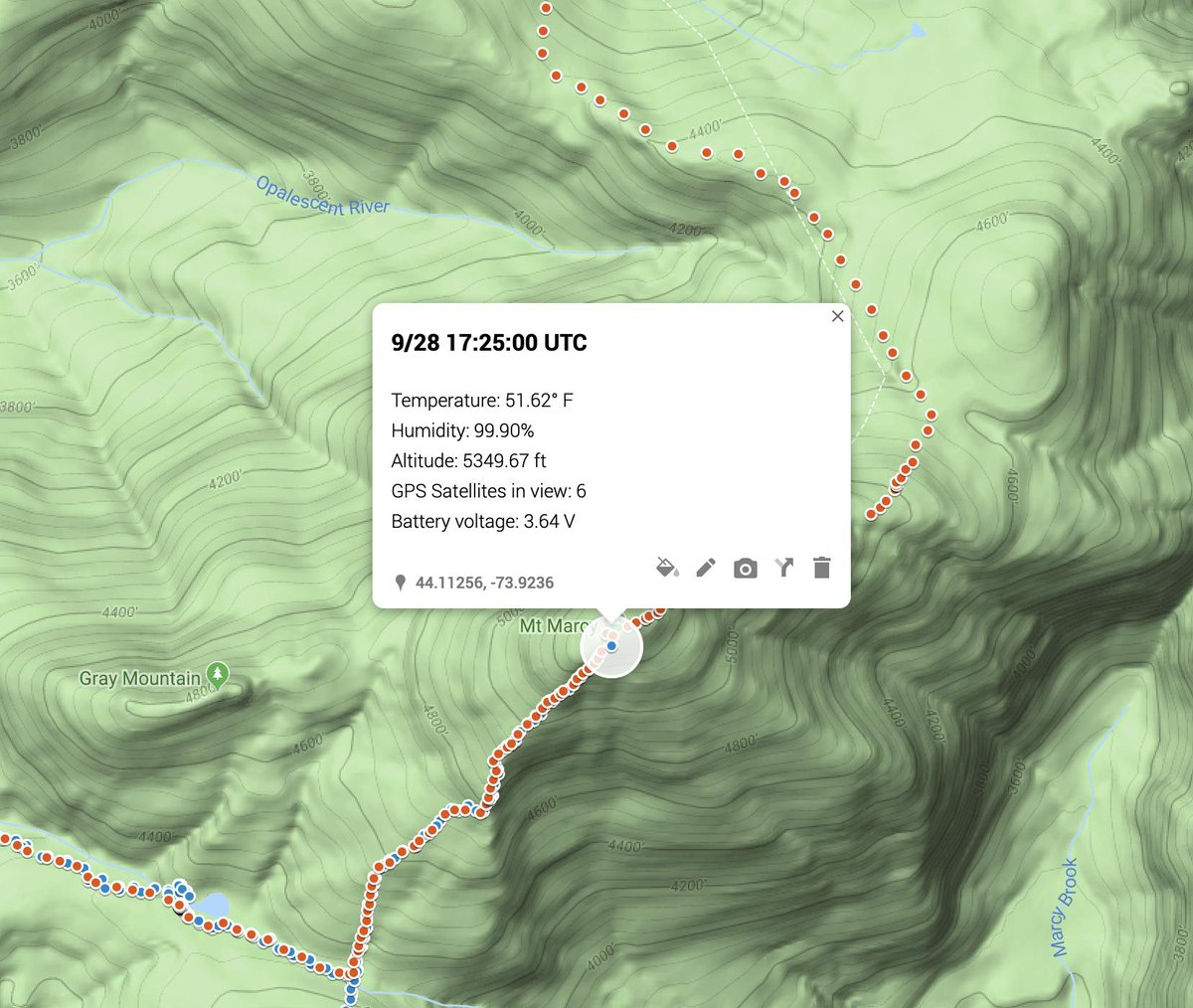
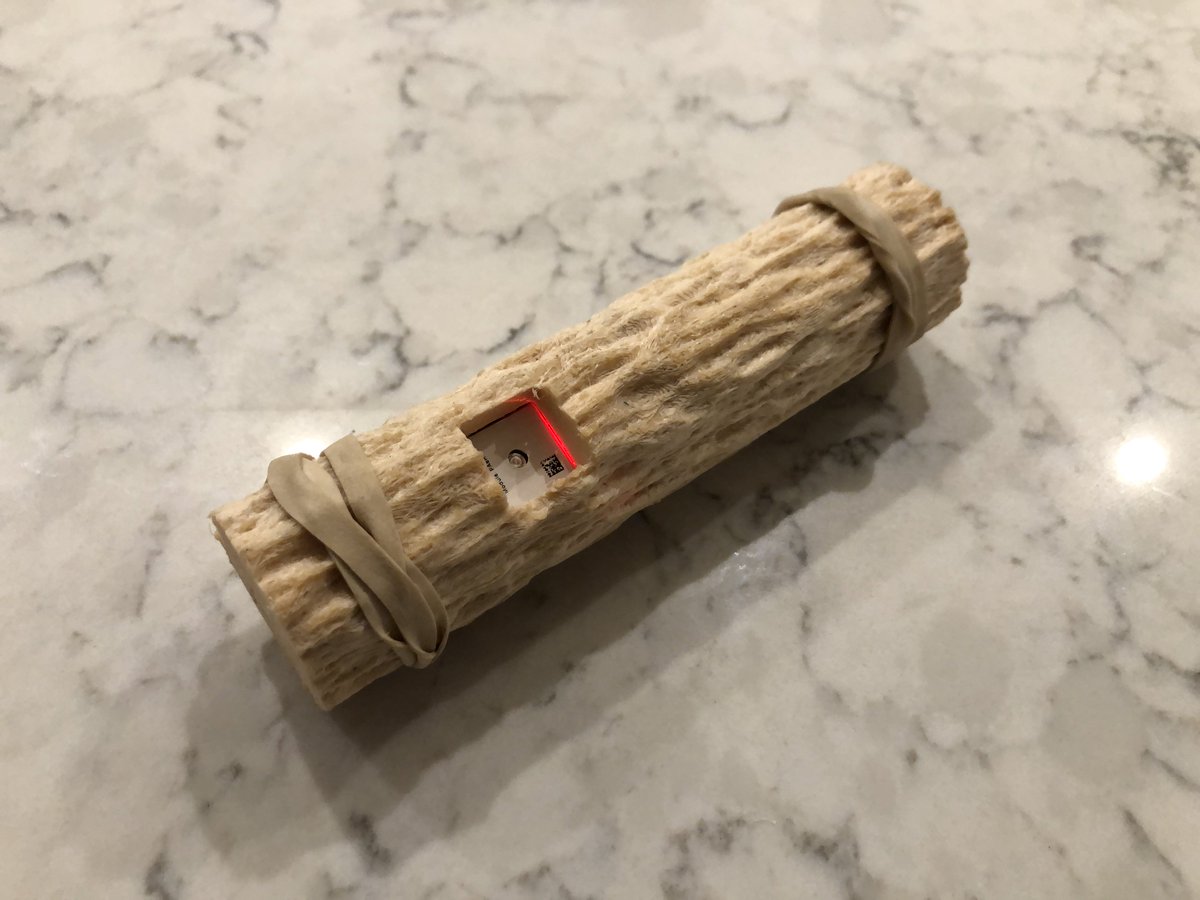
(original)